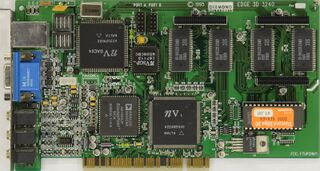Difference between revisions of "NV1"
From Sega Retro
| Line 36: | Line 36: | ||
Edge3D2120 PC.jpg|EDGE 3D 2120 (Diamond Multimedia) | Edge3D2120 PC.jpg|EDGE 3D 2120 (Diamond Multimedia) | ||
Edge3D2120 PC Back.jpg | Edge3D2120 PC Back.jpg | ||
| − | + | Edge3D2200 PC.jpg|EDGE 3D 2200 (Diamond Multimedia) | |
Edge3D3240 PC.jpg|EDGE 3D 3240 (Diamond Multimedia) | Edge3D3240 PC.jpg|EDGE 3D 3240 (Diamond Multimedia) | ||
Notavailable.svg|EDGE 3D 3400 (Diamond Multimedia) | Notavailable.svg|EDGE 3D 3400 (Diamond Multimedia) | ||
| Line 83: | Line 83: | ||
| console=PC | | console=PC | ||
| region=(EDGE 3D 2120) | | region=(EDGE 3D 2120) | ||
| − | | front= | + | | front=Edge3D2120XL PC US Box Front.jpg |
| − | | back= | + | | back=Edge3D2120XL PC US Box Back.jpg |
| − | | spinemissing= | + | | spinemissing=yes |
| − | | square= | + | | square=yes |
}} | }} | ||
{{Scanbox | {{Scanbox | ||
| Line 99: | Line 99: | ||
| console=PC | | console=PC | ||
| region=(EDGE 3D 3240) | | region=(EDGE 3D 3240) | ||
| − | | front= | + | | front=Edge3D3240XL PC US Box Front.jpg |
| − | | back= | + | | back=Edge3D3240XL PC US Box Back.jpg |
| − | | spinemissing= | + | | spinemissing=yes |
| − | | square= | + | | square=yes |
}} | }} | ||
{{Scanbox | {{Scanbox | ||
Revision as of 12:14, 23 March 2019

| ||||||||||
| NV1 | ||||||||||
|---|---|---|---|---|---|---|---|---|---|---|
| Made for: PC | ||||||||||
| Manufacturer: NVIDIA | ||||||||||
|
This short article is in need of work. You can help Sega Retro by adding to it.
The NV1 is a multimedia add-on card developed by NVIDIA and released in 1995. It was the first video card to be developed by the company, and largely failed to make a dent in the overcrowded PC video card market of the era. It also pre-dates standards such as DirectX.
The NV1 is comparable to the Sega Saturn video game console and shares much of its technology, such as rendering 3D geometry as quadrilaterals instead of triangles. With an extension, it is actually possible to input Sega Saturn controllers into the card. Many of Sega's PC endeavours of the era were optimised to make use of the NV1 hardware, and the unreleased successor to the NV1, the NV2, was pitched to Sega (and inevitably rejected) during the Sega Dreamcast development stage.
While NV1's 3D performance is acceptable for the time, it, along with the Saturn to which the card's technology was based on, didn't hold up to scrutiny due to its use of quadrilaterals instead of the industry-standard polygon rendering. Audio quality was also questionable, with the General MIDI quality receiving lukewarm responses at best (a critical component at the time). Direct3D drivers were released by NVIDIA later in the card's lifespan, presumably as a stopgap solution, but it was slow, buggy and compatibility with DirectX games was hit-and-miss, not to mention that it was software-based.
The card's all-in-one nature, while a key selling point as it integrated graphics, audio and gamepad support in one add-on board, was also a pitfall as it added to the cost, and many gamers were unwilling to switch from their often elaborate multimedia setups.
As with subsequent hardware releases by the company (and many others in general), NVIDIA did not manufacture their own hardware, so the card was sold under various names by board partners.
Contents
Compatible games
- Battle Arena Toshinden
- Descent: Destination Saturn[1]
- NASCAR Racing[1]
- Panzer Dragoon[2]
- Virtua Fighter PC[1]
- Virtua Cop[2]
Gallery
Magazine articles
- Main article: NV1/Magazine articles.
Promotional material
Physical scans
| PC, (3D Galaxy) |
|---|
|
| PC, (DynaGraFx 3-D) |
|---|
|
| PC, (EDGE 3D 2200) |
|---|
|
| PC, (EDGE 3D 3400) |
|---|
|
| PC, (Unknown model) |
|---|
|
| PC, (Stratos 3D) |
|---|
|
| PC, (3D Magic) |
|---|
|
| PC, (WinX 3D) |
|---|
|
| PC, (WinFast Proview 3D GD400) |
|---|
|
| PC, (WinFast Proview 3D GD500) |
|---|
|
| PC, (Videoforte VF64-3DG-01) |
|---|
|
| PC, (Videoforte VF64-3DG-02) |
|---|
|
| PC, (JRS-3DS100) |
|---|
|












